For many people, toned and “sculpted” legs are high on the list of fitness-related goals. In reality, the term sculpted really means to train the muscles in a way that stimulates them to grow so they provide a nice shape to an area of the body. Of course, a comprehensive fitness program plus a healthy, balanced diet are also essential in bringing about a favorable body composition so that the toned muscles are more readily visible. Try this lower-body circuit workout to mix up your workout and sculpt shapely legs. Perform these exercises in a large circuit, moving from one movement to the next after completing 10 to 15 repetitions of each. For more challenge, repeat the circuit two to three times.
1. Pause Squat
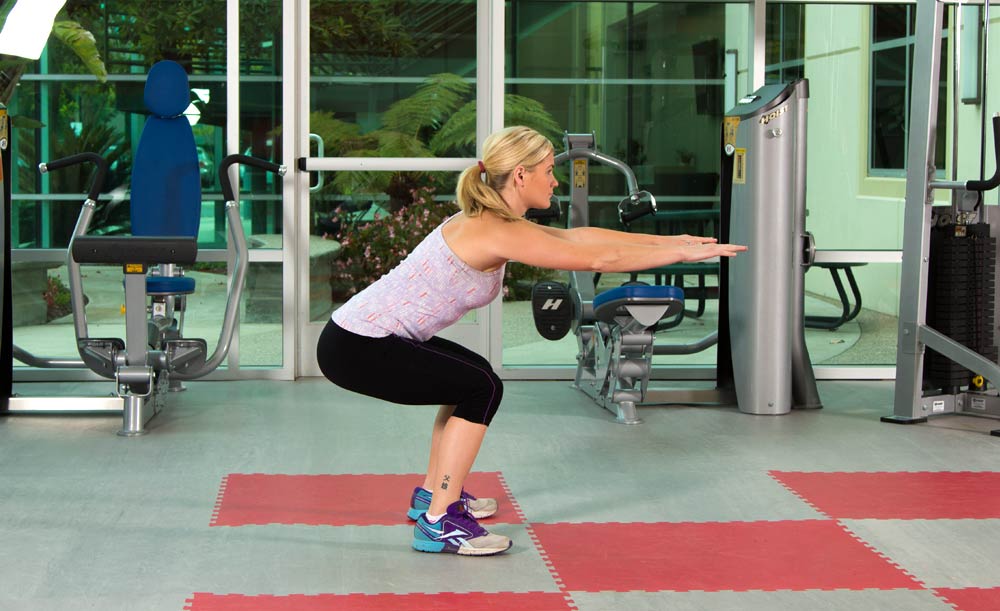
Squats are always a good choice for working the legs. To add intensity, try pausing at the bottom of the squat for a count of three before returning to the top position. Or, better yet, perform three small pulse squats at the bottom before finishing. Pausing/pulsing in this manner will accomplish at least two things: 1) it will increase the time under tension of the working muscles, which is a factor in promoting muscle growth; and 2) it will make you slowly perform the repetitions, which will help you focus on contracting the targeted muscles rather than rushing through the exercise.
To get the most out of the squat, focus on lowering to the deepest tolerable position on the descent without pain, while maintaining good form. Proper technique includes keeping the back in a neutral position, tracking the knees in alignment with the toes and keeping the entire foot flat on the floor.
2. Side Step-down
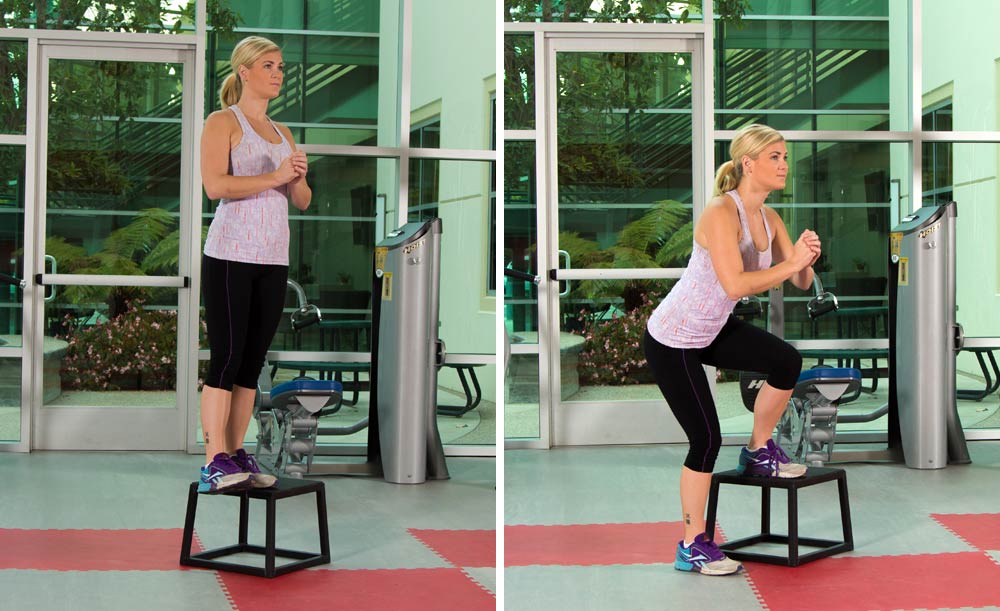
Side step-downs are a version of one-legged squats that are accessible to everyone. Whereas one-legged squats require a high level of balance and control, side-step downs target the same muscles, but in a less intimidating manner.
Stand on top of a weight bench or fitness step (if you are new to this exercise, start on a step height of approximately 8 inches or less). Stand on one leg, with the other dangling off of the side. Slowly lower the dangling foot to the floor by squatting with the supporting leg. Focus on hinging at the hip while pushing the glutes slightly behind you, keeping the back in a neutral position, aligning the knee with the toes and keeping the entire foot flat on the step. Return to the starting position by reversing the process, and don’t forget to stand all the way up so that your torso is vertical and your hips are open.
3. Curtsey Lunge
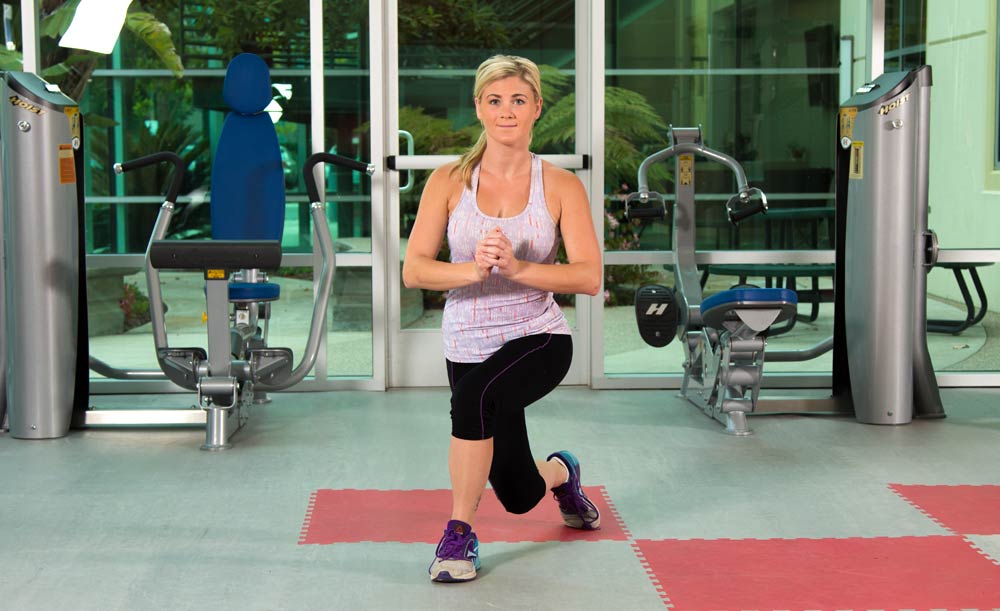
Curtsey lunges are a fun way to mix up your leg routine. They are effective because they target all of the muscles surrounding the hips by requiring that you to move in all three planes of motion.
Stand with the feet slightly wider than shoulder-width apart and then cross one leg backward behind the other in a lunging action that mimics a curtsey. Bend both knees to 90 degrees (or even lower, if you can tolerate it). Pay particular attention to your planted leg in this exercise to make sure that the knee stays directly on top of the ankle (do not allow it to collapse inward). If you find it difficult to keep the knee in line with the ankle, decrease your range of motion so that you don’t descend as much.
4. Banded Glute Bridge
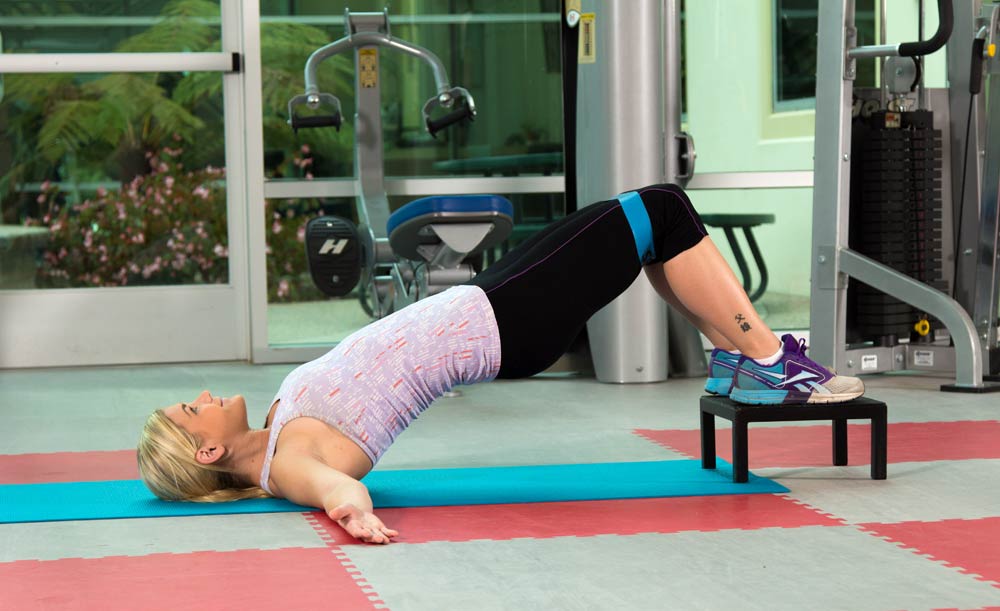
The glute bridge is an effective way to target the hamstrings and glutes. Adding a resistance band to the exercise introduces another level of focus that you will feel immediately.
Place a resistance band around your thighs, above the knees. Lie on your back on the floor with the heels a little wider than hip-width apart on a weight bench or fitness step (if you are new to this exercise, start on a step height of approximately 8 inches or less). Extend your arms out to the side with your palms facing up. Dig your heels into the step and lift your hips up toward the ceiling, all the while keeping tension on the band by pushing the knees outward. Hold at the top for three counts, then slowly lower to the starting position.
5. Jumping Rope
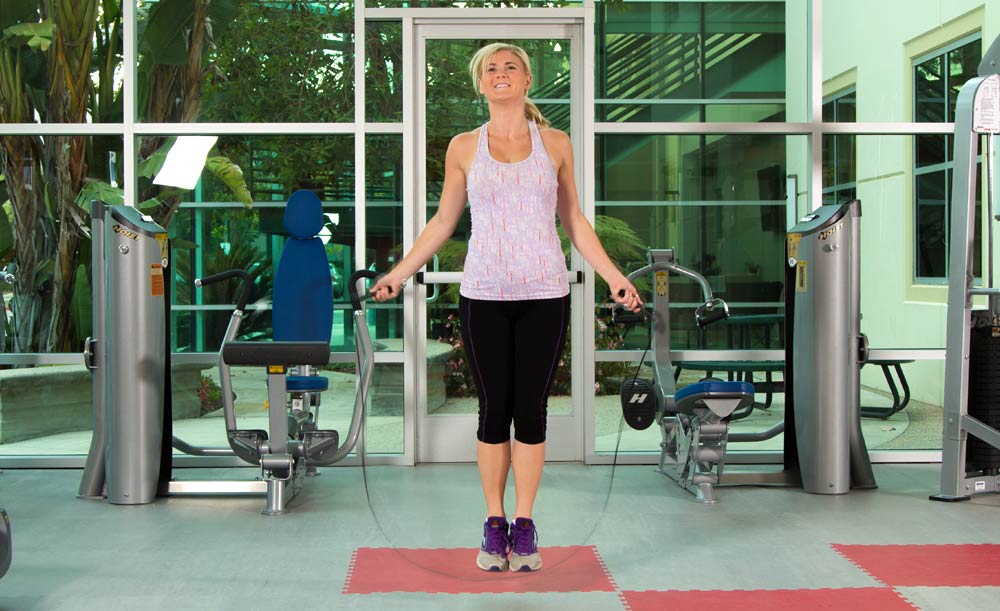
Sculpting the legs wouldn’t be complete without targeting the calves. Jumping rope will work the lower legs and increase the heart rate for added intensity.
To start, stand with the feet together and push from the balls of your feet while slightly bending your knees and flexing your ankles. Keep a minimal bend in the knees and hips so that you can produce most of the force for the jump in the calves. Focus on pointing the toes down toward the floor with each jump. Instead of repetitions for jumping rope, attempt to jump without stopping for 20 seconds, gradually increasing your time to 60 seconds.




 by
by 






 by
by